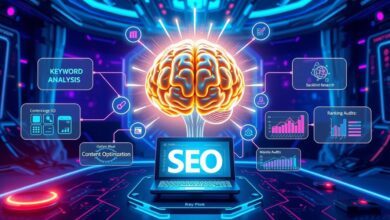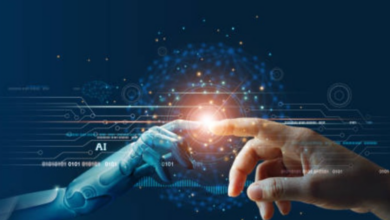
In the dynamic world of digital marketing, the hunt for the perfect influencer to elevate a brand’s presence on social media is more competitive than ever. With the marketplace saturated with potential candidates, identifying the right influencer requires more than just a cursory glance at follower counts or engagement rates.
This is where Artificial Intelligence (AI) steps in, transforming the landscape of influencer marketing by making the process of influencer identification not only more precise but also more efficient.
The Importance of Influencer Identification
The significance of pinpointing the right influencer cannot be overstated. Collaborating with many AI influencers who resonate with a brand’s identity and values can catapult a product into the spotlight, forging a connection with audiences that goes beyond traditional advertising.
However, the process is fraught with challenges, from sifting through a vast pool of potential influencers to ensuring the authenticity of their engagement and alignment with the brand’s ethos.
Identifying the right influencer is akin to finding a needle in a digital haystack. It demands a deep dive into data analytics, understanding nuanced audience demographics, and recognizing the subtle interplay between brand image and influencer persona.
The precision in this selection process directly correlates with the success of marketing campaigns, making influencer identification a critical first step in the journey toward impactful influencer marketing.
Leveraging AI in Influencer Identification
Enter Artificial Intelligence, a game-changer in the realm of influencer marketing. AI technologies offer sophisticated solutions that go beyond basic metrics, employing advanced algorithms and machine learning to analyze vast datasets.
These technologies can assess not just the quantitative aspects of an influencer’s profile, such as follower growth and engagement rates, but also the qualitative elements like content relevance, audience sentiment, and influencer-brand compatibility.
By harnessing AI, brands can automate the tedious process of data analysis, freeing up valuable time to focus on strategy and creative collaboration. AI-generated content also offers actionable insights that human analysis might overlook, such as identifying emerging influencers whose audience engagement and growth metrics predict future success before they hit the mainstream.
The integration of AI in influencer identification also extends to predictive analytics, offering forecasts on campaign performance based on historical data and current trends.
This predictive capability enables brands to make informed decisions, ensuring that their influencer partnerships are not just based on past successes but are also aligned with future marketing objectives.
How AI Algorithms Identify Potential Influencers
At the heart of AI-driven influencer identification are sophisticated algorithms that sift through social media platforms to discover and evaluate potential influencers.
These algorithms are designed to analyze multiple data points, from basic metrics like follower count and engagement rate to more complex indicators such as content quality, posting frequency, and audience demographics.
One key aspect of these algorithms is their ability to understand and categorize content. Using natural language processing (NLP) and image recognition techniques, AI tools can assess the relevance and quality of an influencer’s content, ensuring it aligns with the brand’s messaging and values.
Furthermore, sentiment analysis allows these tools to gauge the audience’s perception of the influencer, providing insights into the authenticity of engagement and the influencer’s potential impact on the audience.
Another significant advantage of AI algorithms is their scalability. While manual influencer identification is limited by human capacity, AI tools can analyze thousands of influencer profiles across multiple platforms in a fraction of the time. This scalability not only accelerates the identification process but also broadens the search, uncovering hidden gems that might otherwise go unnoticed.
Best Practices for Utilizing AI in Influencer Identification
To maximize the benefits of AI in influencer identification, brands should adopt a strategic approach that integrates technology with human insight.
First and foremost, it’s crucial to define clear objectives for the influencer campaign, including target audience, desired outcomes, and key performance indicators (KPIs). These objectives should guide the AI-driven search, ensuring that the technology is aligned with the brand’s marketing goals.
Secondly, brands should seek out AI tools that offer a comprehensive analysis, looking beyond basic metrics to consider factors like content relevance, audience sentiment, and influencer-brand compatibility. It’s also important to choose tools that provide transparent methodologies, allowing brands to understand how the algorithms operate and how the data is interpreted.
Moreover, while AI can provide valuable insights, the final decision should involve human judgment. Brands should review the AI-recommended influencers, considering factors like creative style, personality fit, and potential for long-term partnerships. This hybrid approach ensures that the selection process benefits from both the efficiency of AI and the nuance of human evaluation.
Challenges and Limitations of AI in Influencer Identification
Despite its advantages, leveraging AI in influencer identification is not without its challenges. One of the primary concerns is data privacy and the ethical use of personal information. As AI tools analyze social media profiles and audience interactions, it’s essential to navigate the fine line between insightful analysis and invasive surveillance, respecting user privacy and adhering to data protection regulations.
Another limitation is the risk of over-reliance on quantitative metrics. While AI excels at analyzing data, the human aspects of influencer marketing—such as creativity, personal connection, and brand fit—cannot be fully quantified. Brands must be wary of choosing influencers based solely on numbers, recognizing that the essence of successful influencer partnerships lies in authentic, meaningful connections.
Furthermore, the rapidly changing social media landscape presents a challenge for AI algorithms, which must continuously adapt to new platforms, trends, and user behaviors. Keeping these algorithms up-to-date requires ongoing development and refinement, ensuring they remain effective in the ever-evolving digital world.
Future Trends in AI-driven Influencer Identification
Looking ahead, the integration of AI in influencer identification is set to deepen, with emerging technologies offering new possibilities for brands and marketers. One promising development is the use of AI for real-time influencer discovery, enabling brands to identify and engage with influencers at the moment, capitalizing on trending topics and viral content.
Another trend is the personalization of influencer marketing, with AI tools analyzing individual user data to recommend influencer content that aligns with their interests and behaviors. This hyper-targeted approach not only enhances the effectiveness of influencer campaigns but also improves the user experience, delivering content that is genuinely relevant and engaging.
Moreover, as AI technologies evolve, we can expect to see more sophisticated analyses of influencer performance, incorporating factors like emotional engagement, brand loyalty, and long-term impact. These insights will enable brands to forge deeper, more impactful influencer partnerships, driving the evolution of influencer marketing toward a more authentic, personalized, and data-driven future.







